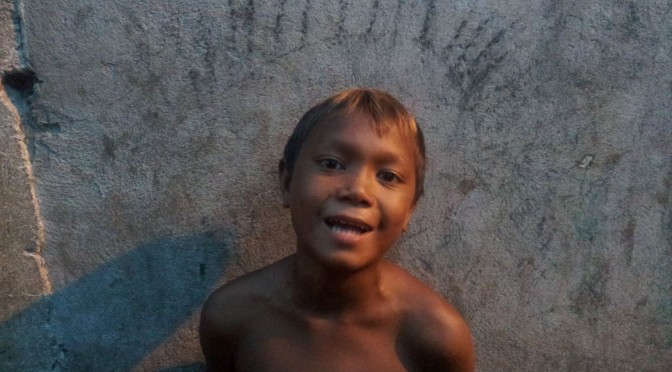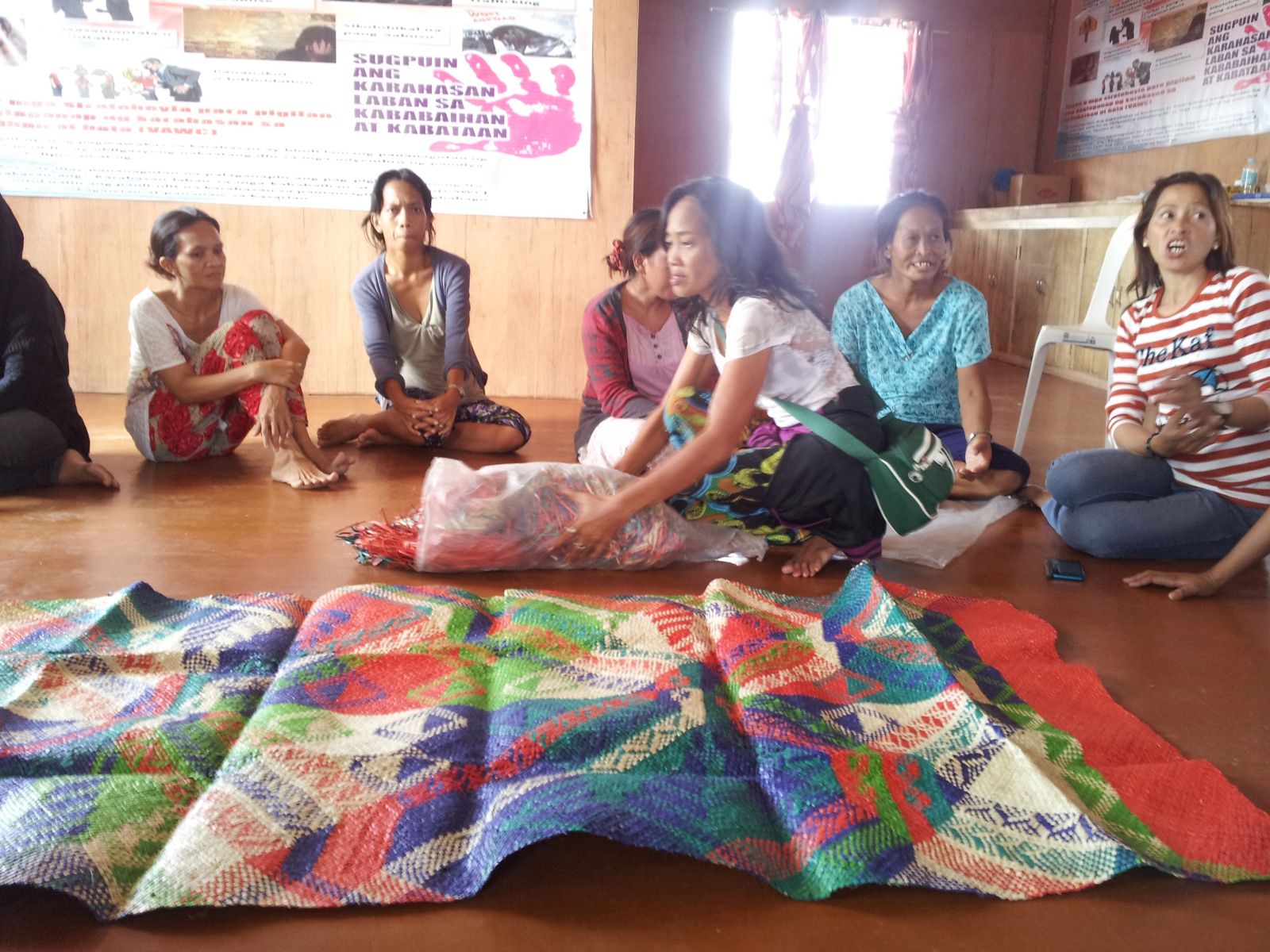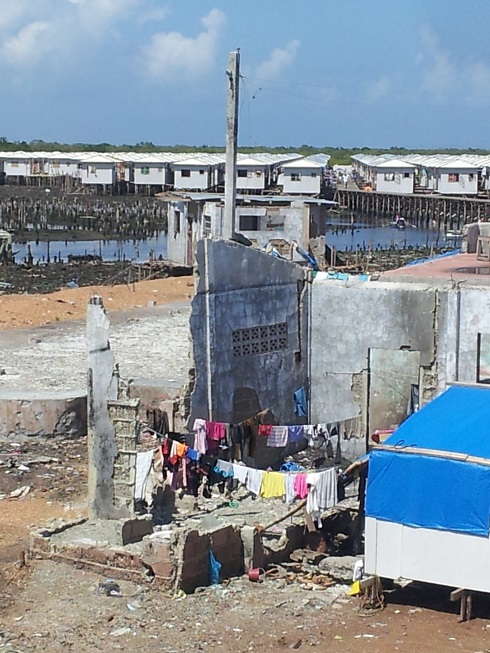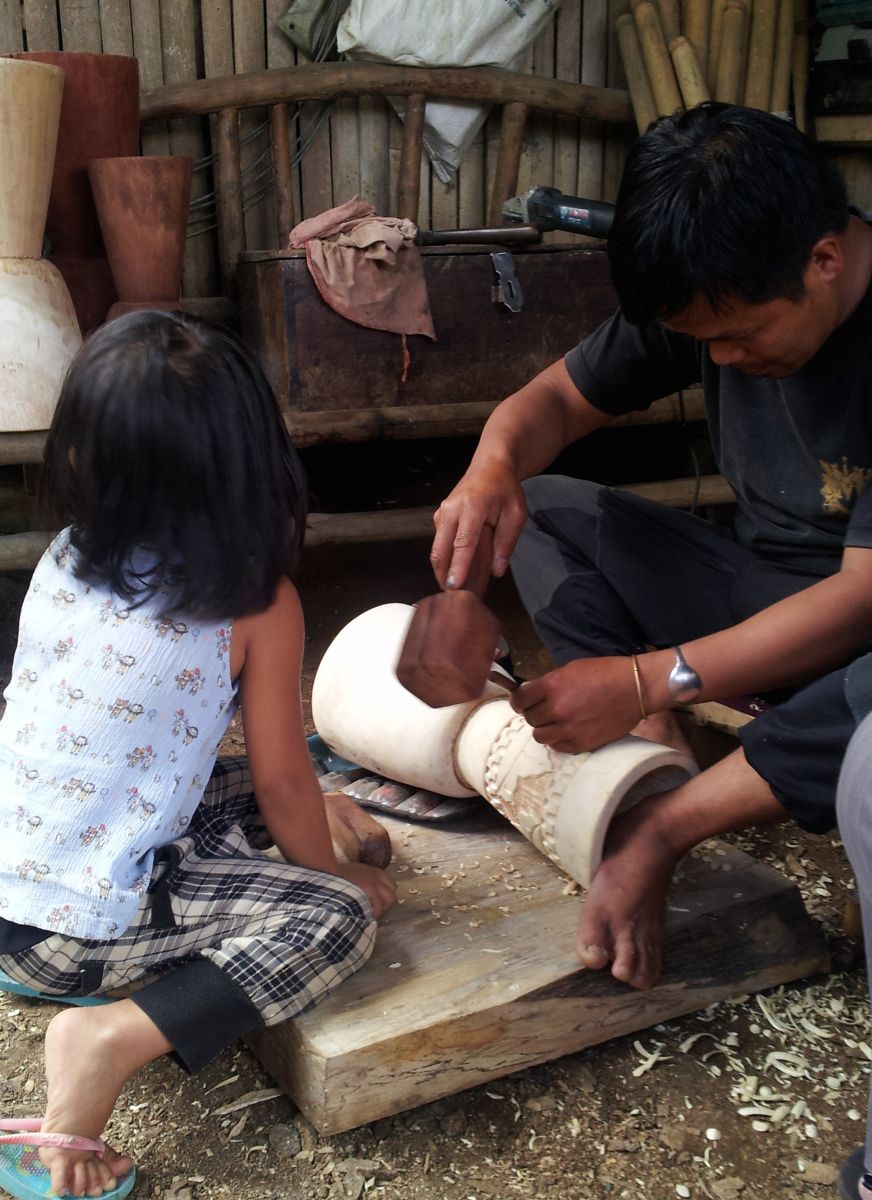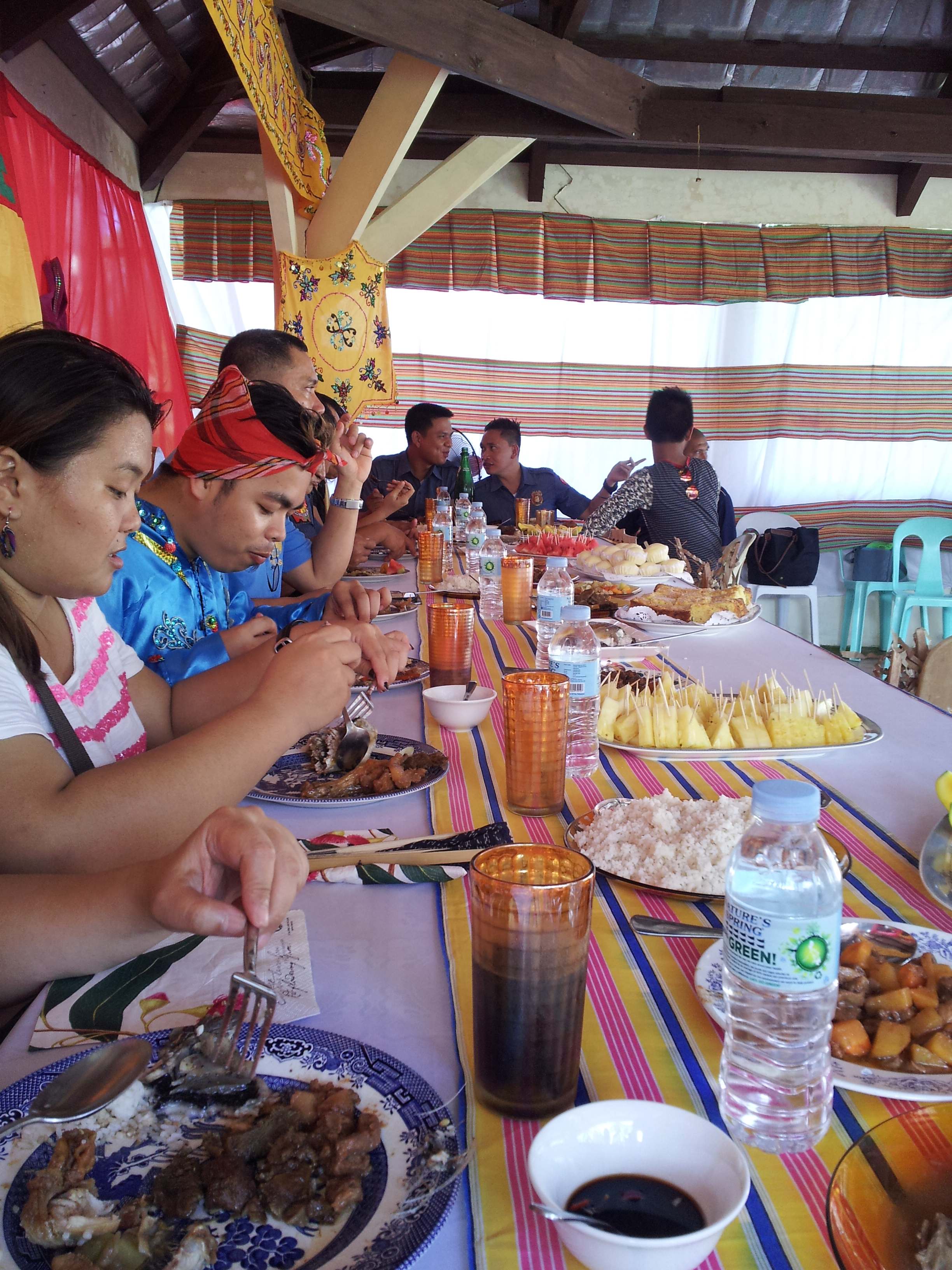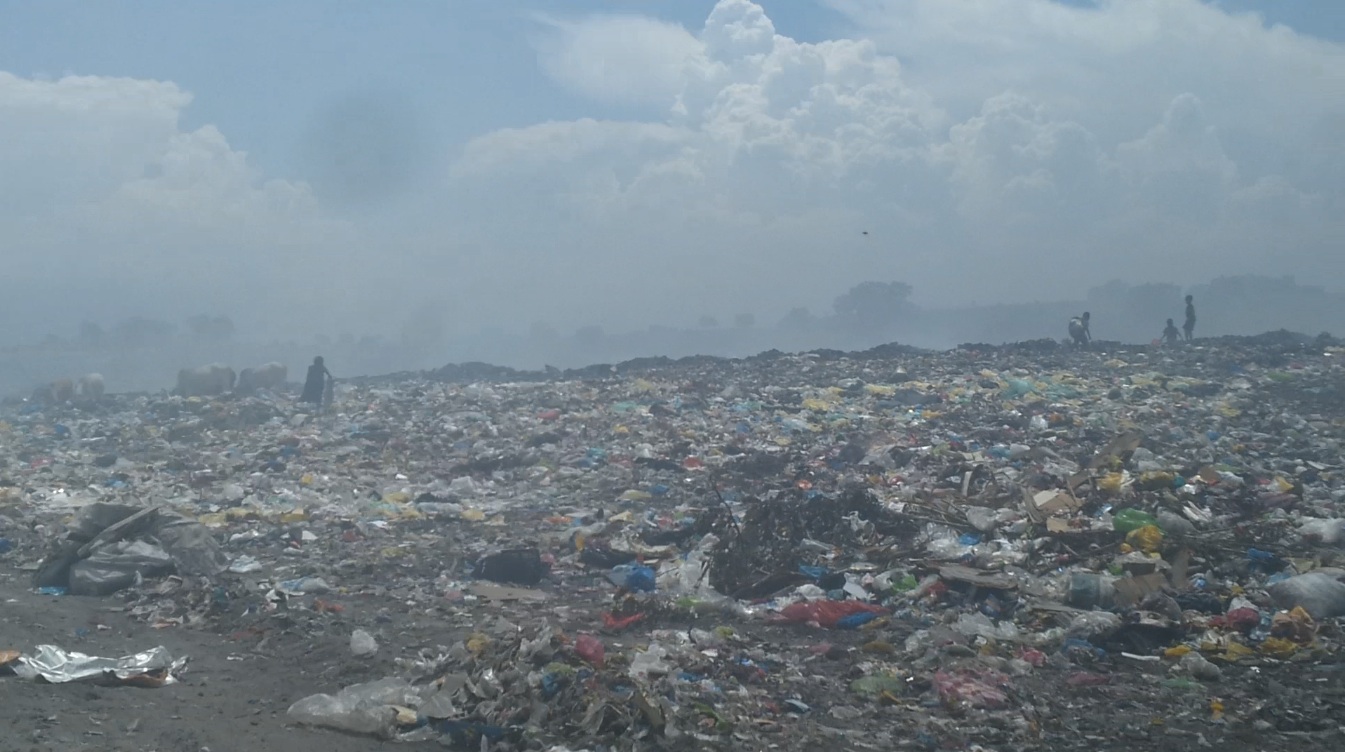In July 2015, one King’s PhD researcher and a group of Philippine community artists, academics and documenters undertook a two-week ‘RoRo’ journey in Mindanao, the largest island in the southern Philippines. The journey was part of PSi#21, an international Performance Studies research project, which coordinated conferences in fifteen locations across the globe in 2015.
By Ella Parry-Davies, PhD student in Performance Studies
The name of the RoRo project uses the phrase ‘On Tilted Earth’ to suggest the precarious condition of life in the Philippines: in Tagalog, Sa Tagilid na Yuta. But in the stressed third syllables of sa tagīlid na yutā, the rhythmic rocking sound of the phrase (at least for the non-Tagalog speaker) contains the memory and motion of the sea, even as it speaks of the land. Inhabitants of archipelagic space sometimes live on the sea – like the nomadic indigenous group the Badjao – and many frequently live by, from and with it. This emerged in our discussions with the Mindanaoans we met along the way: they fished, they dived for coins and pearls, they developed incredible resistance to the breathlessness of being under water. They made their living from the traffic of the port, trading Indonesian batik, or catching the sardines that swim past the south coast of this island at just the right size for canning, or the huge tuna that are sold as high-grade sashimi to Japan. The language of water seemed to permeate the ways in which we felt and spoke about our experiences. ‘Do you ever get the feeling that stories just pour out of people?’ organiser Professor Jazmin Llana asked me once.
Mindanaoans have reclaimed a term – bakwit – to speak of evacuees and evacuations, and many of the stories I tell below are anchored in that experience, either as a result of conflict, scarcity of resources, or natural disaster. Our journey through Mindanao placed us in syncopated rhythms with these archipelagic lives, so that there became something especially relevant about the fact of travelling as a method of research, or as a way of thinking through the movement of the space. We met with indigenous groups who faced (or had been) forced from their gold-rich land by transnational mining corporations and corrupt legal battles over ancestral land rights; or who suffered from “bio-piracy”, in which pharmaceutical companies had patented traditional medicines to sell back to them at a premium. Against this backdrop, the Bangsamoro Basic Law was being debated, which would establish a separately elected Muslim government in Mindanao. Born from calls to re-establish the rights of Muslim and indigenous people in Mindanao who had been displaced by Spanish and American colonialists and Christian settlers from other parts of the Philippines, the act would also produce multiple forms of displacement in a region which is no longer majority Islamic.
Thought, if not actually written, on the road, the constraints of time and space to write on the back of a postcard are as much a premise to reflect on and gather an experience of journeying as they are a message sent ‘back home’. On the move, memories of places we had left resurfaced as we heard similar stories of conflict and displacement again and again, and as our own transitions brushed against the migrations of the islanders. I was reminded of lunar cycles and eclipses, or the ways in which, driving along the coast as we so often did, we would be intermittently reunited with glimpses of the sea…
Ms Young shows us a mat woven by one of her neighbours in a “transitory site” in the city of Zamboanga, where 800 families have been temporarily housed. The women’s homes were caught in a siege formed by armed clashes between the military and the Moro National Liberation Front (MNLF), which lasted for three weeks in 2013 and has resulted in almost three years of displacement for these evacuees – or the bakwit, as they are known: our contact here tells us 120,000 people were displaced in this incident. We meet in a women-friendly space in which a program for leadership skills has been set up by the Ateneo de Zamboanga university. For community artist Rosalie Zerrudo, one of our team of travellers, the mat became symbolic of both the adversity and the resilience of the women we met: the indigenous craft of weaving brought them together in their cultural diversity, but the physical hardship of mat-making, for the fingers and the back, attested to the difficulties of incorporating the religious and cultural differences in Mindanao into a communal social fabric. When we left the transitory site, Jazmin was frustrated with the lack of basic material resources. “If there is a physicalisation of liminality, that was it,” she tells me. “It’s in the name: ‘transitory site’. Transitory site.”
The next day, we visited ‘Ground Zero’ of the siege. Wooden houses had been burnt away, leaving a swathe of bare concrete stilts rising from the water. The mud was strewn with rubbish. In our conversations, there was a tangible yearning for the familiar rhythms of the sea, and a deep frustration at the waste created by the experience of displacement and the “permanent shelters” being built here, which in many ways (such as the new sewage system) were impractical for the terrain and the community. We met a small boat fishing for sea urchins and sea grapes. The fishermen and women now lived on the transitory site we’d been to the day before: they told us of diving for pearls, and I remembered Ms Young gleefully telling us stories of her youth diving for coins thrown by tourists as their boats came in. Returning to ‘Ground Zero’ to fish, then taking the catches to Zamboanga market, is costly in both time and gasoline money. The large neighbourhood had, before the siege, been relatively self-sufficient, but was forced to operate now across new geographies of trade and community. Hearing it so often, I learnt my first new word in Tagalog – malayo – meaning ‘far away’.
This drum-maker lives in a village in the Bukidnon region, in which the first ‘School of Living Traditions’ has been set up by the community elder Datu Vic. The School is designed to preserve the crafts and practices of his indigenous group the Tala’andig, not as ‘museum pieces’, but as dynamic working elements of contemporary life. Children attend the School every day from the ages of three to seven, before going to the State elementary school, learning weaving, dancing, chanting, drumming and oral history. Datu Vic speaks bitterly about the colonisation of the bodies and belief systems of his indigenous group. Without leaving their land, the tribe have nonetheless been displaced from their relation to it through religious missionaries, bio-piracy, and corrupt legal battles over land rights. Resilience, he tells us, can only begin with recourse to indigenous self-awareness, ritual, and cultural mechanisms of resolution. ‘Spirituality’, and its evacuation from the bodies of its practitioners, is the most elusive element to reanimate, he tells us. When I ask him about cultural memory, he immediately speaks of survival, but not in the terms I was expecting. He rejects the idea of memory, stressing that living practice and consciousness are more vital. “When you use your eyes, you don’t have to memorise.”
Police share in a lunch at the house of Sonita Ryde, who has been recently enthroned as a Bae Labi or ‘Princess’ of the Subanen indigenous people thanks to the work she has done in mediating between religious factions and the military, and campaigning for indigenous rights. In Buug, security and militarisation is high in the face of recurrent ambush and kidnap – both the her and our group (particularly myself, as the only non-Filipino) are potential targets, and we are escorted from an army checkpoint to her house by military personnel. In the garden where we eat, we are surrounded by the artefacts, crafts and dances of the Subanen people, but inside the house I notice cut-glass decanters and ornate strawberry tea-sets. Bae Labi Sonita tells me that her late husband was an English serviceman, and that she spent twenty years living in a cul-de-sac near Wensleydale in the North of England. I’m stunned by the strange geopolitical palimpsest of my own militarised presence here and have the uncomfortable feeling that my nationality is acting independently of myself. Upstairs, a table is set for high tea: my Filipina friends jokingly ask me to pose for a photo. I don’t know the cutlery rules but Joana has been to catering school and explains what to do.
Noah is a child in the Badjao indigenous community, who live in Davao City, although they are originally from Zamboanga. Noah is one of the best storytellers amongst his friends, and he improvised a song for us, which rhymed, but in a language we could not understand. The Badjao are traditionally sea nomads and make their living from fishing, but in Zamboanga they were victims of pirates who would steal their catches, their engines and sometimes even their boats. In 1993 they began to move, family by family, to Davao. Mastalbari Edjie Adjari’s family was the first to move: back then he was ten years old. He misses the sparkling clear sea of Zamboanga, he told me, which he could slip into so easily. It is our last day in Mindanao. With vivid déjà-vu I listen to his stories of diving for coins as tourists came in on the boats, and my mind sails back to a transitory site in Zamboanga… Here, the sea is dirty and far from the village, and the rubbish washes downstream from the town faster than they can clear it away. When the flash flood hit Davao four years ago, it was bodies that they cleared from the river’s mouth.
Forty-eight families from the B’laan tribe have made their homes on the margins of this rubbish tip in General Santos city. Displaced from their ancestral land, they move with the dumpsite, following its slim bounty, from which they might make $3 a day scavenging. In the face of this sheer dearth of resources, an elderly woman offers me an ornamental comb (su hai) she has made, with brightly coloured strings of tiny beads that fall behind my ears. In the afternoon, we see a play called Dula Ta (Let’s Play), in which a wandering, traumatised ex-soldier, his shoes tied up with plastic bags from the trash, plays with two fatherless children in a no-man’s-land intermittently pelted with gunfire. The performance itself feels displaced, camped out in a local gymnasium against a scenery of cardboard boxes, like so many images of the ‘bakwit’. But the title also bluntly casts the war in Mindanao as a game for those profiteering from the corruption and chaos fostered by perpetual conflict and evacuations. After the performance, the organizer of the event quotes passages from both the Bible and the Qur’an. “All people are as equal as the teeth of a comb,” he pronounces. When I stand up, overwhelmed by the inequalities resonating through this one day, my beaded comb has made a pattern of tiny dents in the grip of my palms.

